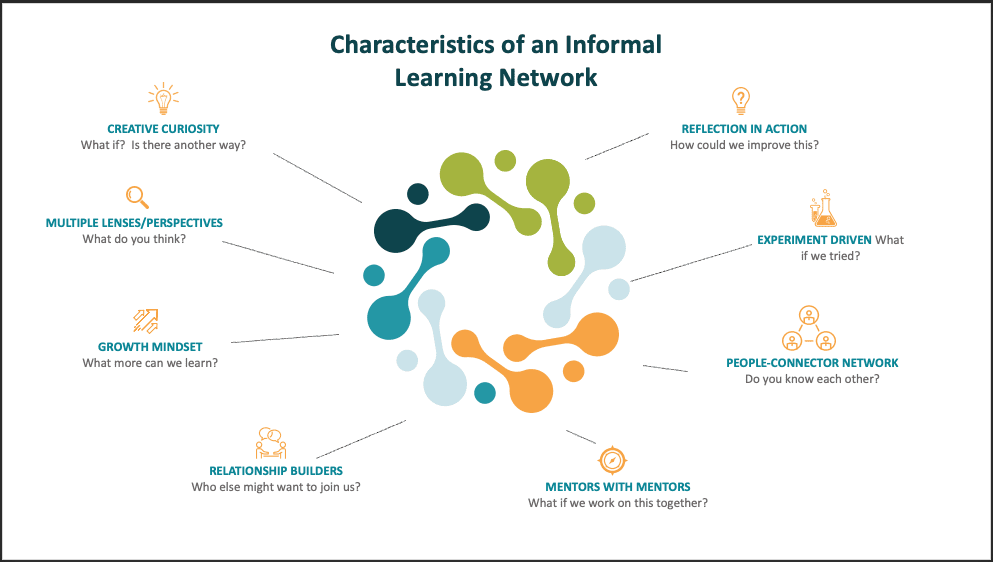
I can remember the exact moment when I went from being a transactional learner to a lifelong learner. I was in a meeting with my leader at that time, checking in on how things were going. “Just keep doing what you’re doing,” was his response. I don’t know if any of you have heard those six words in a corporate setting, but they were life-changing for me in terms of learning.
When I heard those six words, my immediate thought was that I didn’t want to. It felt like my learning journey was about to be stalled. With that in mind, I started to think long and hard about what I wanted to pursue next in terms of my career, and what I needed to learn in order to get there. Knowing that there were no current opportunities for formal, external training, I had to find another way to continue my learning journey.
Through these reflections, I realized that I didn’t always have to attend external training or a conference to keep learning. Don’t get me wrong, I’m grateful for all of the events I’ve had the opportunity to attend, all the times I shared what I learned with my colleagues, and how doing that helped me deepen my learning.
My aha moment came when I started to think about how I could learn from other associates in my enterprise and share what I learned with them. What I didn’t expect was that while learning from others, I uncovered a wealth of knowledge and experience in my own enterprise that was way beyond my expectations. And here I was, just starting to tap into it!
My first learning network
It was a typical cold and snowy day in January in Chicago when I started my first conversation around creating an informal learning network. What happened as a result forever changed how I approached learning. Another Agile coach in a completely different business unit and geographic location reached out to me to inquire about some of the workshops that I was creating and facilitating. Throughout our conversation, he shared some of the amazing things he was doing to coach his Lean-Agile transformation, and connected me with some other coaches and trainers in the organization. The more we collaborated, the more we learned from and with each other, and the more excited we were to start additional learning networks within and across our business units.
Fast forward more than three years and a move to another company, I’m still part of a number of informal learning networks with many of my colleagues from that organization. Every time we learn something new that we feel would be beneficial to the others in the network, we share it. And we learn more every time we share in these moments.
What is a learning network?
If you were to research the words “learning network” via books or an online search, you might come up empty. There isn’t much out there on the topic. In fact, I was excited one day to see “learning network” listed in the index of one of my learning books. But it pointed me toward networks in general, which wasn’t helpful. Not long after that I was telling a colleague about one of my informal learning collaborations and I called it a learning network. It just seemed like the right way to describe it.
So, here’s my personal definition: A learning network is a community of people with a passion for learning and growing. Often, these are formal gatherings; you’ve probably been a part of one at some point in your career. Now, let’s extend that definition to an informal learning network where a community of people catalyze learning in and through others across and beyond their enterprises. I drafted this broad definition based on my own personal experiences reading books and articles, watching videos, and through lots of conversations with colleagues around the world.
Now that we’ve got a working definition, let’s dive into exactly what comprises an informal learning network.

Characteristics of informal learning networks
The best way I’ve found to describe these learning networks is to share the questions people in these networks are curious about. So, here’s my synthesis of a lot of research around how we share what we learn across enterprises.

And here’s something else I’ve learned about informal learning networks that grow over time. The most important skill you need to improve as a learner is to start asking questions like:
- How do I learn faster?
- What will you do about it? This happens when you realize you want to learn something and no one in your network has that skill.
- What more can I be doing?
- What can I change?
- How do I sharpen my skills in this area?
Learning networks are successful in part because of some informal assumptions. An open-door policy (everyone is welcome), the fact that there are no rules, and that there’s no planned start or perceived end.
Sharing and reflecting
There is a flow to a typical conversation where people share and then reflect.
I know what you’re thinking: “How do people in these networks do their day-to-day work and still have time for these network activities?”

Engaging and spending time within these networks is not a time-consuming effort that is separate from current initiatives. Rather, it complements and enhances current delivery. Imagine if you were interested in working on a specific feature, yet didn’t have all of the knowledge and experience that was needed to accomplish it. Rather than pursuing something else to work on, you became curious about who in your network, or enterprise, may have the skill you need and would be open to offering you the opportunity to learn from them. This is one of the best ways to create learning organizations and extend them across an entire enterprise to create a continuous learning culture.
Your personal learning journey
I believe learning within an enterprise takes on many forms, shapes, and sizes. I believe that the learning networks that I’ll be introducing to you in this blog series are the best kept secrets in enterprises today. And I also believe that each and every one of you, as change leaders, are best positioned to tap into these networks to create a continuous learning culture.
So, my challenge for you is to start thinking about your own personal learning journey and how these learning networks can help you along the way.
Continue your personal learning journey by reading the second post in my series about how learning networks emerge, the third post about how to uncover those networks, and my final post about connecting your learning networks to SAFe.
About Audrey Boydston

Audrey Boydston is a senior consultant at Scaled Agile and an experienced SPCT, Lean-Agile coach, trainer, and facilitator. Her work focuses on continuous learning, building fundamentals, re-orienting around principles, and helping clients—from senior executives to developers—build networks and communities that support their transformations.
Share:
Back to: All Blog Posts
Next: Aligning Global Teams Through Agile Program Management: A Case Study